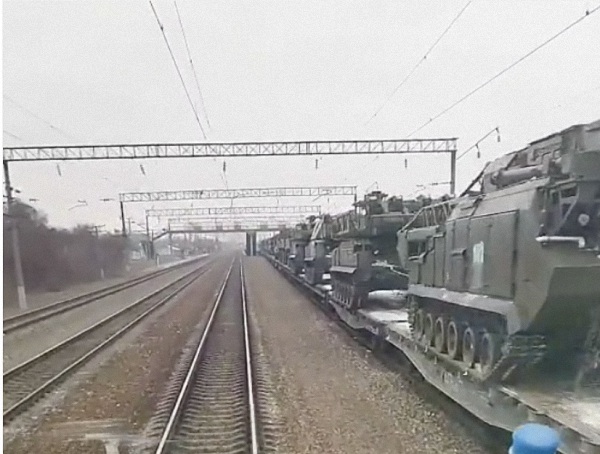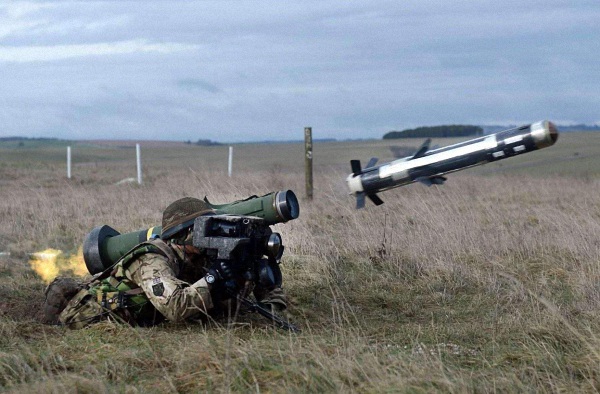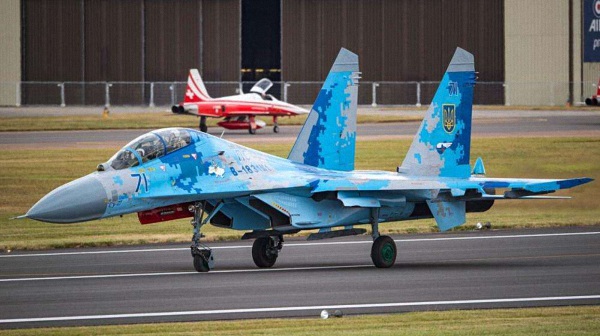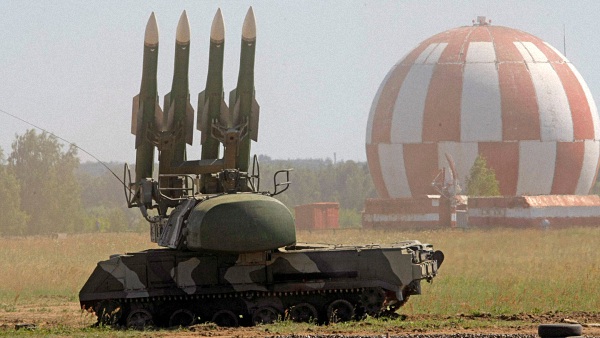Original title: Bingtaozhilue|The tension on the Russian-Ukrainian border has intensified. Will it really go to war?
Hot news: Recently, the extremely tense situation in Ukraine has become an international hot spot. On December 7, US President Biden and Russian President Putin held a closed-door meeting through a confidential video communication channel, mainly discussing the Ukrainian issue. The US and Russian leaders explained their positions and “red lines” to each other. Biden emphasized that Russia’s deployment of troops near the border between Russia and Ukraine is “threatening.” The United States will provide Ukraine with additional defensive equipment and strengthen the NATO allies on the eastern front to deal with the escalation of the conflict. The Russian side denied the plan to “invade” Ukraine. Putin said that Russia is disturbed by Ukraine and NATO’s increase in military power. Putin also mentioned the issue of NATO’s intensive military activities in the Black Sea countries.
Earlier, US Central Intelligence Agency Director Burns said in an interview with the media that Russia’s military presence near the Ukrainian border continues to increase, with the number of Chen soldiers ranging from 75,000 to 175,000, and speculated that it may “invade Ukraine” early next year.
Comments:Russia and Ukraine have a special historical origin, and the development of the relationship between the two countries has a major impact on the stability of the CIS and the European strategic pattern. Recently, large-scale military mobilizations have suddenly occurred along the borders between Russia and Ukraine, especially in the Donbass region, which has led to increasing tensions in Europe. At the same time, NATO, led by the United States, has also increased its arms sales and military assistance to Ukraine, increased its military deployment in Eastern Europe, and adopted a strong posture of preparing for full-scale use of force through the deployment of troops. The tense situation in Russia and Ukraine has also brought more uncertainties to the security situation in Europe.
Contradictions and differences between Russia and Ukraine lead to constant conflicts
After the disintegration of the Soviet Union, the relationship between Russia and Ukraine has been very complicated. Especially since the Crimea crisis in 2014, the relationship between the two countries has been ups and downs and the tension has been escalating. For Russia, Ukraine has unique and irreplaceable value. Ukraine is connected to Russia and Belarus in the east, Poland, Czech Republic, Romania, Hungary and many other EU countries to the west, and the Black Sea to the south and Turkey across the sea. It happens to be located at the junction of the three major groups of CIS, Western Europe and Central Europe. It is a bridge connecting Russia with Central and Western Europe, the Balkans and the Mediterranean region, and its geostrategic position is very important. More prominently, in terms of military affairs, Russia’s Black Sea Fleet is stationed at Sevastopol Port in Crimea for a long time. It is the only outlet that Russia has in the northern part of the Black Sea. Russia wants to maintain control of the Black Sea. Must deal with Ukraine.
In addition, for Russia, Ukraine is an important security barrier in western Russia and a strategic fulcrum for Russia to realize the rejuvenation of a great power. After the disintegration of the Soviet Union, Russia’s national development goal has always been to seek rejuvenation. In the process of forming a new European security structure, the entire Eastern European region has been included in Russia’s strategic interests, while Ukraine occupies a very critical position. The loss of Ukraine will bring Russia’s greatest loss to the further deterioration of its geographic environment, which makes NATO countries directly border on the Russian border and face NATO’s anti-missile system. Russia will lose its buffer zone with the West and suffer more military forces. threaten. This shows that Ukraine has strategic interests that Russia can safeguard at any cost. A revived Russia must ensure that Ukraine, such a “turf” of absolute strategic significance, will not be “occupied” by the United States and NATO.
For Ukraine, due to historical grievances, territorial disputes, and the instigation of Western countries, it has shown a tendency to become more and more alienated from Russia in its foreign policy. It regards moving closer to the West and integrating into European civilization as safeguarding national independence and social development. At the same time, NATO, headed by the United States, is used as a security guarantee to balance the influence of Russia, actively seeking support from NATO and even joining NATO. These policy ideas will lead to irreconcilable contradictions in its relations with Russia, as well as subsequent conflicts. Continue to plant foreshadowing.
 Russia transports anti-aircraft missiles by rail.
Russia transports anti-aircraft missiles by rail.The Donbass situation pushes Russia and Ukraine to the “edge of war”?
The sudden tension between Russia and Ukraine has a lot to do with the deterioration of the situation in the Donbass region in eastern Ukraine since the beginning of this year. The Donbass region is located on the border between Russia and Ukraine. It consists of two parts: Lugansk and Donnitsk. It belongs to Russia in history and was assigned to Ukraine during the Soviet period. However, because the people of Donbass are basically Russia The ethnic group is more inclined to Russia in terms of identity. Therefore, the Donbass region has long been a highly free “autonomous region”. Big trouble.
Due to complicated issues such as historical issues and ethnic conflicts, the Donbass region has been in turmoil for a long time. In April 2014, a large-scale conflict between Uzbek government forces and civilian armed forces broke out in the Donbass region. After the mediation of the international community, the two parties reached a ceasefire agreement and established a ceasefire line. In July 2020, the Ukrainian Ministry of National Defense officially issued a statement on a comprehensive ceasefire in eastern Ukraine. Both parties to the conflict will effectively implement the binding measures and reporting systems for ceasefire violations, and establish a ceasefire coordination mechanism on the Donbass military contact line. Since then, large-scale armed conflicts have been brought under control, but small-scale firefights have occurred from time to time, resulting in casualties on both sides.
In order to quell the “insurgency” in the Donbass region, Ukraine has taken many powerful measures, including drawing troops from other directions and deploying them in the Donbass as the main measure to deal with the Russian offensive. It is reported that the Uzbek army has deployed more than half of its troops, a total of 125,000 people in the Donbass area. On December 6, Ukrainian President Zelensky personally visited the eastern Donbass front line and reviewed the elite Ukrainian troops stationed there. He declared that the Ukrainian army has a high degree of fighting spirit and professional capabilities, and is capable of frustrating Russia’s invasion plan. From the perspective of military objectives, Ukraine’s expectation is to withstand the first fierce Russian offensive, and after waiting for follow-up support from the “NATO partners”, it will repel the Russian army in one go, and then take advantage of the situation to regain lost ground and completely solve the civilian population in eastern Ukraine. Armed.
 In October of this year, the United States provided Ukraine with “Javelin” anti-tank missiles.
In October of this year, the United States provided Ukraine with “Javelin” anti-tank missiles.In order to gain the sympathy and support of the international community, especially Western countries, Ukraine has repeatedly hyped up and constantly exaggerated the threat of “Russia invading Ukraine” despite Russia’s explicit denial on various occasions. For example, in an interview recently, Brigadier General Ilo Budanov, the head of the Ukrainian defense intelligence agency, declared in an interview that the Russian army has now deployed 40 “battalion-level battle groups” in eastern Ukraine, including 92,000 soldiers and 1,200 tanks. And 2,900 infantry fighting vehicles, ready to launch an offensive from three directions at the end of January or early February. The combined offensive launched may include air strikes, artillery fire assaults, and armored assaults, and pointed out that Russia has been photographed through satellite photos last month. Its self-propelled artillery, main battle tanks and infantry fighting vehicles are being transported to a training base about 300 kilometers from the Russian-Ukrainian border. In addition, Budanov also said that once Russia decides to start war, it will be a modern blitz, and the Russian army will attack at the same time, including attacking the Ukrainian capital Kiev from the direction of Belarus, and attacking and occupying Dnepr from the Donbass region. The vast area on the east bank of the river will also attack Mariupol and Odessa and other Black Sea coastal areas from the direction of Crimea. These remarks will further aggravate the tension in the Uzbek region and push Russia and Uzbekistan closer to the “edge of war.”
The U.S. and Russia compete to determine the future trend of the regional situation
The escalation of the conflict between Russia and Ukraine has a lot to do with the backing and advocacy of the United States. As a large country in Central and Eastern Europe, Ukraine has an important geographic position and has always been a key development target of the United States. It is an important force that the United States hopes to balance the relationship between the West and Russia and to contain Russia. American geopolitical scientists believe that Russia, without Ukraine, will not be able to become a global power and will be reduced to a regional medium power. Therefore, to provoke the relations between Russia and Ukraine to keep Ukraine away from Russia has become the main content of the US Eastern European policy.
 Su-27 fighter jets equipped by the Ukrainian Air Force.
Su-27 fighter jets equipped by the Ukrainian Air Force.In essence, the Donbass conflict is a proxy war, that is, a conflict between the U.S.-supported Ukrainian government forces and pro-Russian local armed forces. In order to hype up the situation in Uzbekistan and achieve the greatest effect of instigating Russia-Ukraine relations, the United States on the one hand very cooperatively released a satellite image to prove the large-scale build-up of Russian troops at the border, and on the other hand, US officials came forward to pass the United States. The media conveyed a signal that the United States and NATO would not stand idly by. For example, US Secretary of Defense Austin has repeatedly stated that the United States is considering different ways to help Ukraine defend its territory. As the Donbass region borders Russia, if the United States really intervenes and controls the region or even deploys missiles and other strategic weapons here, Russia will face a direct military threat. Therefore, Russia will inevitably take tit-for-tat measures to counterattack.
Therefore, from the perspective of future development, since the Uzbekistan issue involves various forces, it has far exceeded the scope of Ukraine’s internal and even Russia-Ukraine relations. The final decision on whether Ukraine and Russia break out of war is not in Ukraine, but in the United States and the United States. Is Russia’s opposition so acute that it requires a battle in Ukraine? Judging from the current situation, the United States is currently mired in multiple crises and has gradually shifted its focus to the “Indo-Pacific” region. In order to avoid competing with the two superpowers of the world at the same time, the United States has always dealt with the issue of relations with Russia. In order not to do anything, he is unwilling to have a direct military confrontation with Russia.
According to US media reports, although the US side threatened Moscow not to invade Ukraine, otherwise it would suffer an “unprecedented counterattack” by NATO, it emphasized that it would not send US troops to participate in the war when the conflict broke out, but “will give partners Strong support”. In addition, the United States only involved “Javelin” anti-tank missiles when providing assistance to Ukraine, but not the more advanced “Stinger” air defense missiles. Its purpose is also to try to prevent touching Russia’s bottom line. All this shows that the United States is adopting a selective confrontation with Russia, and it hopes to plunge Russia into the “war quagmire” of Ukraine, thereby distracting its strategic energy in other regions. From this perspective, although the United States and Russia will continue to compete in Ukraine in the future, maintaining regional stability is still the goal pursued by both parties.
(Bing Tao Zhilue is a personal column created by Ling Yunzhi, a researcher from the Asia-Pacific Development Research Center of Nanjing University, for the surging defense column. It counts recent major defense incidents, commenting on the mystery behind the information, peeling cocoons, drawing silk, and dusting gold. , See or leave)
.
